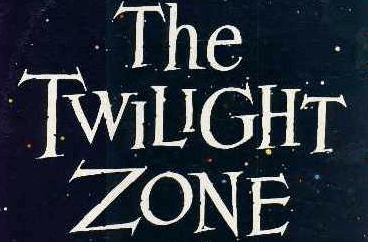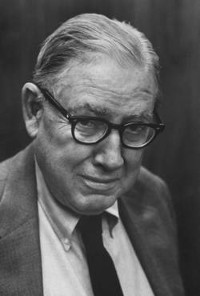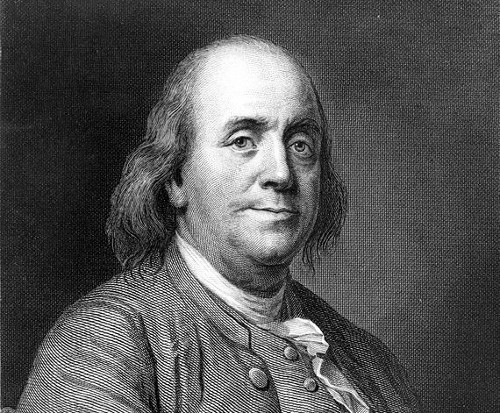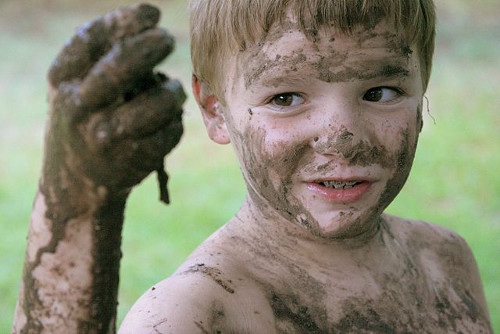Take Two

Rod Serling’s original opening narration for The Twilight Zone read, “There is a sixth dimension, beyond that which is known to man. It is a dimension as vast as space and as timeless as infinity. It is the middle ground between light and shadow, and it lies between the pit of man’s fear and the sunlight of his knowledge. This is the dimension of imagination. It is an area that might be called The Twilight Zone.”
Producer Bill Self questioned the line There is a sixth dimension … “I said, ‘Rod, what is the fifth one?’ And he said, ‘I don’t know. Aren’t there five?’ I said, ‘I can only think of four.’ So we rewrote it and rerecorded it and said, ‘There is a fifth dimension, beyond that which is known to man …'”
Asked how he came up with the title The Twilight Zone, Serling said, “I thought I’d made it up, but I’ve heard since that there is an Air Force term relating to a moment when a plane is coming down on approach and it cannot see the horizon. It’s called the twilight zone, but it’s an obscure term which I had not heard before.”
(From Marc Scott Zicree, The Twilight Zone Companion, 1982.)
“No, No, Mr. Nash”

Let us begin by saying we have nothing but the deepest aversion
Against casting an aspersion
On the beautiful works of Ogden Nash.
In fact we might say we go for his stuff like a vegetarian goes for his succotash.
But the thing that swerves us
From downright admiration is the length of his lines which sometimes look more like paragraphs than lines — frankly it unnerves us.
In fact we have it from unreliable sources
That several people have narrowly missed death by asphyxiation while attempting to read aloud one of these book-length sentences in one breath, all of which forces
Us to request that Mr. Nash please stick to a line that can be written entirely on one page, for when we see one of these endless lines looming up over the edge of the next stanza, we have been known to turn the page and start something else; while on the other hand, when Mr. Nash sticks to a briefer line with definite rhythm,
We’re whythym.
— An unnamed college humor magazine, quoted in Richard Koppe et al., A Treasury of College Humor, 1950
Fearless
Founded in the 1880s by Manhattan rationalists, the 13 Club held a regular dinner on the 13th of each month, seating 13 members at each table deliberately to laugh at superstition.
“I have given some attention to popular superstitions, and let me tell you that argument is powerless against them,” founding member Daniel Wolff told journalist Philip Hubert in 1890. “They have a grip upon the imagination that nothing but ridicule will lessen.” As an example he cited the tradition that the mirrors must be removed from a room in which a corpse is lying. “Make the experiment yourself, and the next time you are called upon to sit up with a corpse, notice how uncomfortable a mirror will make you feel,” he said. “Of course it is a matter of the imagination, but you can’t reason against it. All the ingrained terrors of six thousand years are in your bones. You walk across the floor and catch a glimpse of yourself in the glass. You start; was there not a spectral something behind you? So you cover it up.”
As honorary members the club recruited 16 U.S. senators, 12 governors, and six Army generals. Robert Green Ingersoll ended one 1886 toast by declaring, “We have had enough mediocrity, enough policy, enough superstition, enough prejudice, enough provincialism, and the time has come for the American citizen to say: ‘Hereafter I will be represented by men who are worthy, not only of the great Republic, but of the Nineteenth Century.'”
But Oscar Wilde, for one, turned them down. “I love superstitions,” he wrote. “They are the colour element of thought and imagination. They are the opponents of common sense. Common sense is the enemy of romance. The aim of your society seems to be dreadful. Leave us some unreality. Don’t make us too offensively sane.”
(Thanks, David.)
In a Word

auricomous
adj. golden-haired
flavicomous
adj. having yellow hair
melanocomous
adj. black-haired
lissotrichous
adj. having smooth hair
cymotrichous
adj. having wavy hair
crinicultural
adj. caring for the condition or appearance of the hair
floricomous
adj. having the head adorned with flowers
Podcast Episode 43: Ben Franklin’s Guide to Living

As a young man, Benjamin Franklin drew up a “plan for attaining moral perfection” based on a list of 13 virtues. Half a century later he credited the plan for much of his success in life. In this episode of the Futility Closet podcast we’ll explore Franklin’s self-improvement plan and find out which vices gave him the most trouble.
We’ll also learn how activist Natan Sharansky used chess to stay sane in Soviet prisons and puzzle over why the Pentagon has so many bathrooms.
The Paradox of the Muddy Children

Three children return home after playing outside, and their father tells them that at least one of them has a muddy face. He repeats the phrase “Step forward if you have a muddy face” until all and only the children with muddy faces have stepped forward.
If there’s only one child with a muddy face, then she’ll step forward immediately — she can see that no other children have muddy faces, so her father must be talking about her. Each of the other children will see her muddy face and stand fast, since they have no way of knowing whether their own faces are muddy.
If there are two children with muddy faces, then no one will step forward after the first request, since each might think the father is addressing the other one. But when no one steps forward after the first request, each will realize that there must be two children with muddy faces, and that she herself must be one of them. So both will step forward after the second request, and the rest will stand fast.
A pattern emerges: If there are n children with muddy faces, then n will step forward after the nth request.
But now imagine a scenario in which more than one of the children has a muddy face, but the father does not tell them that at least one of them has a muddy face. Now no one steps forward after the first request, for the same reason as before. But no one steps forward at the second request either, because the fact that no one stepped forward after the first request no longer means that there is more than one child with a muddy face.
This is perplexing. In the second scenario all the children can see that at least one of them has a muddy face, so it seems needless for the father to tell them so. But without his statement the argument never gets going; despite his repeated requests, no child will ever step forward. What’s missing?
(From Michael Clark, Paradoxes From A to Z, 2007.)
Punctual
Ernest Hemingway published this “blank verse” in his high school literary magazine in 1916:

Get it? David Morice followed up with this “punctuation poem” in Word Ways in February 2012:
% , & —
+ . ? /
” :
% ;
+ $ [ \
It’s a limerick:
Percent comma ampersand dash
Plus period question mark slash
Quotation mark colon
Percent semicolon
Plus dollar sign bracket backslash
(Thanks, Volodymyr.)
Threewise

Draw an arbitrary triangle and build an equilateral triangle on each of its sides, as shown.
Now show that AP = BQ = CR.
Isomorses
LEG and RUN share the same “bit” pattern in Morse code:
·-·· · --·
·-· ··- -·
So do EARN and URN (which are also homophones):
· ·- ·-· -·
··- ·-· -·
(Discovered by Philip Cohen.)
UPDATE: Reader Dave Lawrence wrote a script to find more of these. He found 2,900, including these highlights:
[one_third]TEMPT YAK[/one_third][one_third]ATTIC JINN[/one_third][one_third]SUAVE SINNER[/one_third]
[one_third]KILL TRUSTEE[/one_third][one_third]NIACIN BANNER[/one_third][one_third]CONVEX COBALT[/one_third]
[one_third]DRAIN NINETEEN[/one_third][one_third]WOMEN JOKE[/one_third][one_third]OMELETS TODDLE[/one_third]
[one_third]ENZYME APRON[/one_third][one_third]GOAT MEOW[/one_third][one_third]EMINENT PAINT[/one_third]
[one_third]ABSINTHE PHIALS[/one_third][one_third]NIPPLE BANANAS[/one_third][one_third]LEFTIE LEFTS[/one_third]
[one_third]CONTENT COCK[/one_third][one_third]DOTTY TUMMY[/one_third][one_third]PAPER WINGER[/one_third]
[one_third]EERIEST VISIT[/one_third][one_third]GENUINE GAVEL[/one_third][one_third]WETTEST ANGST[/one_third]
[one_third]SPEED SATIRE[/one_third][one_third]REUNITE LEPER[/one_third][one_third]COW COAT[/one_third]
[one_third]CINDER CURVE[/one_third][one_third]FUNK ELEMENT[/one_third][one_third]THOSE BAGS[/one_third]
[one_third]DELIVER BLISTER[/one_third][one_third]CAUSES CRASH[/one_third][one_third]DEFENSIVE THRASHER[/one_third]
[one_third]SKIN STAIN[/one_third][one_third]CHIMNEY CHUTNEY[/one_third][one_third]SOME VOTE[/one_third]
[one_third]PESKIER WHALER[/one_third][one_third]RANDY REMEDY[/one_third][one_third]ESTEEMED SAUCE[/one_third]
[one_third]MANGO TYPO[/one_third][one_third]TEXTUAL CANARD[/one_third][one_third]INANE FEZ[/one_third]
[one_third]REEXAMINE ASTEROID[/one_third][one_third]DEFILE BIBLE[/one_third][one_third]MILKMEN MIRROR[/one_third]
[one_third]BEAT THAT[/one_third][one_third]NEAREST DENTIST[/one_third][one_third]GRANDER GREMLIN[/one_third]
[one_third]TIGER TUNER[/one_third][one_third]SUCH HANDS[/one_third][one_third]INDEXED URINAL[/one_third]
[one_third]TICKLED NECTARINE[/one_third][one_third]JACK ATTACK[/one_third][one_third]GREENISH GLASSES[/one_third]
[one_third]BEBOP DUSTMAN[/one_third][one_third]PATIENCE WIZARD[/one_third][one_third]DRAMA NINJA[/one_third]
[one_third]BAROQUE BAROMETER[/one_third][one_third]NEURON BARON[/one_third][one_third]NEUTRON BACON[/one_third]
[one_third]DISK THEFT[/one_third][one_third]PAMPAS PEOPLE[/one_third][one_third]TROIKA COURT[/one_third]
[one_third]COLLIE TROLLS[/one_third][one_third]MINISCULE MINISKIRTS[/one_third][one_third]MATTED GORE[/one_third]
[one_third]INSULIN INHALER[/one_third][one_third]MEETING GETUP[/one_third][one_third]SELF SERVE[/one_third]
[one_third]KITTEN CAKE[/one_third][one_third]TRUTH CUBE[/one_third][one_third]CHAP TENSING[/one_third]
[one_third]PELICAN ABDICATE[/one_third][one_third]KALE TARTS[/one_third][one_third]TROUSER COUSIN[/one_third]
[one_third]VAST STREET[/one_third][one_third]DISTORTED DIVORCE[/one_third][one_third]BRUNETTE DELEGATE[/one_third]
[one_third]F*CKED ELEMENTAL[/one_third][one_third]MAIZE GNATS[/one_third][one_third]SPOUSE SWATTERS[/one_third]
[one_third]FIRMS INVADE[/one_third][one_third]CHIEF KISSER[/one_third][one_third]SWITCH SPACES[/one_third]
[one_third]THREE NESTS[/one_third][one_third]INVERTING FIRETRAP[/one_third][one_third]MOUSE OTTERS[/one_third]
[one_third]ANALYZE PARROTS[/one_third][one_third]AIMLESS RETCHES[/one_third][one_third]RAWHIDE RAPISTS[/one_third]
[one_third]MINIMAL GLANCE[/one_third][one_third]PRIESTS PRESIDE[/one_third][one_third]INBRED INTESTINE[/one_third]
[one_third]GUFFAW MILDLY[/one_third][one_third]MIDDAY GRAVY[/one_third][one_third]WONDER AMOEBAE[/one_third]
[one_third]PALE AXLE[/one_third][one_third]WHISKEY EMISSARY[/one_third][one_third]CAGED CAMEL[/one_third]
[one_third]MINTIER GENDER[/one_third][one_third]QUEER MAIDEN[/one_third][one_third]ASTERISK AIRLIFT[/one_third]
[one_third]SACRED SEQUEL[/one_third][one_third]ESPIED SEABED[/one_third][one_third]MAIM GNAT[/one_third]
[one_third]TURNIP TURBAN[/one_third][one_third_last]NIGHTIE NIGHTS[one_third_last]


